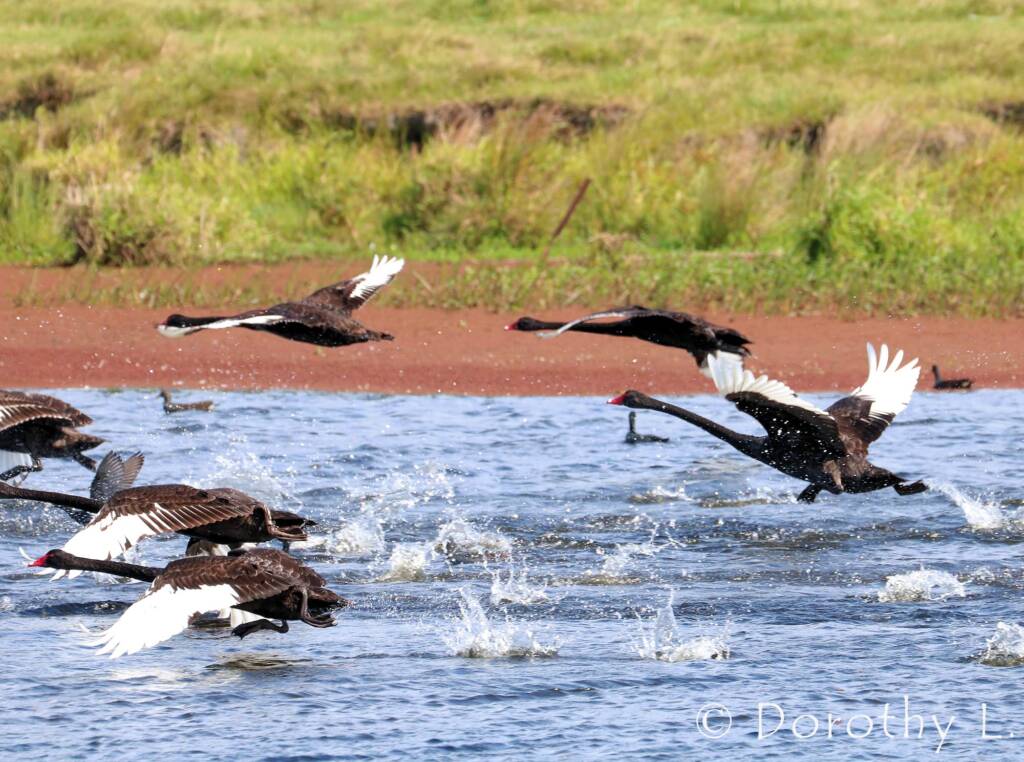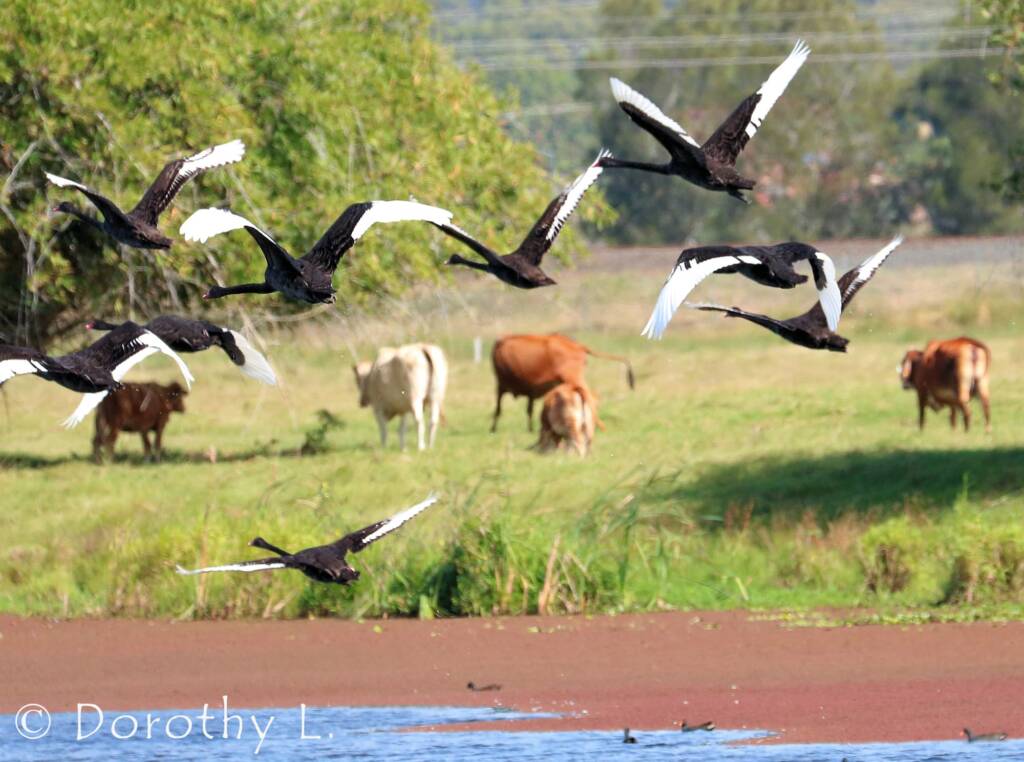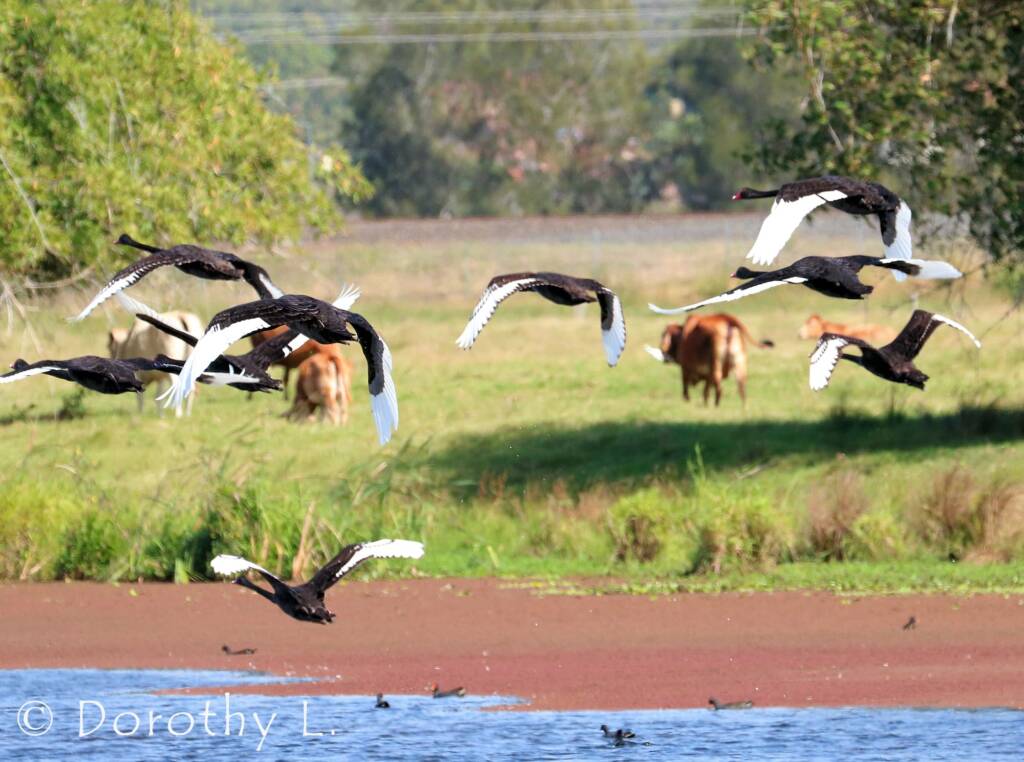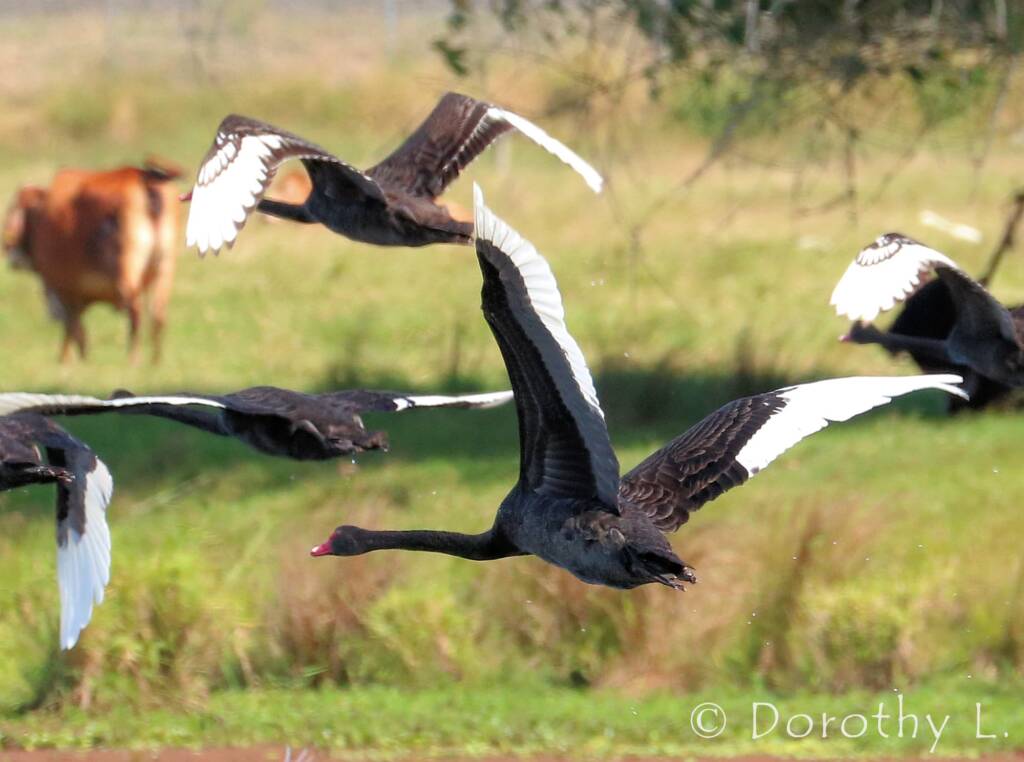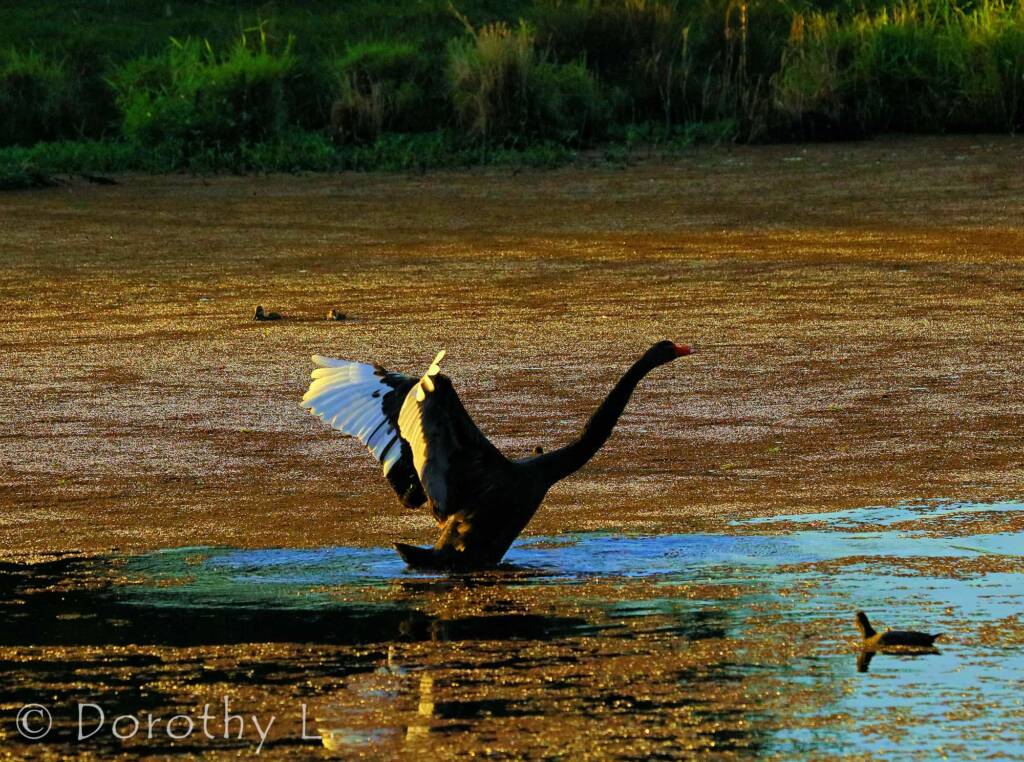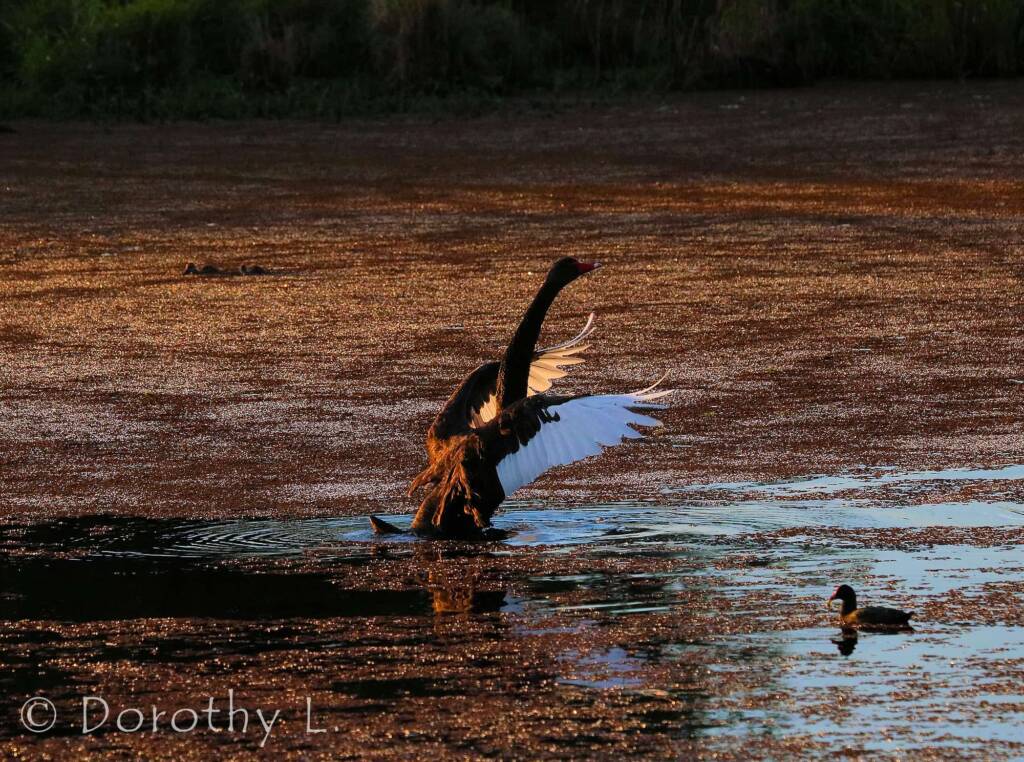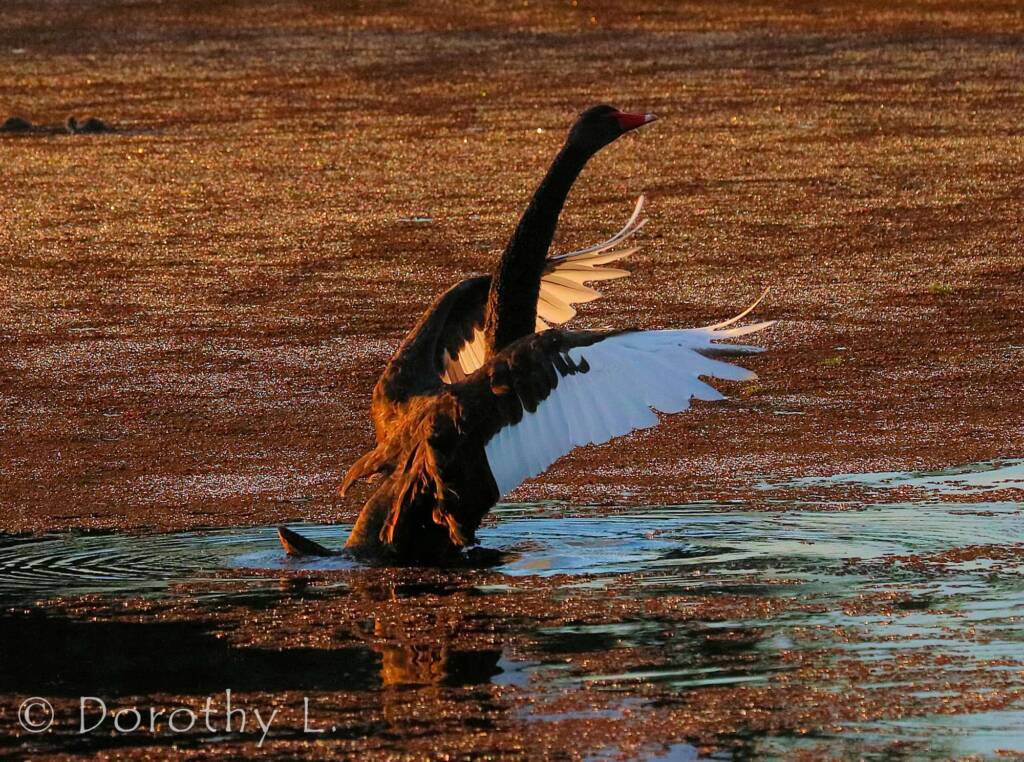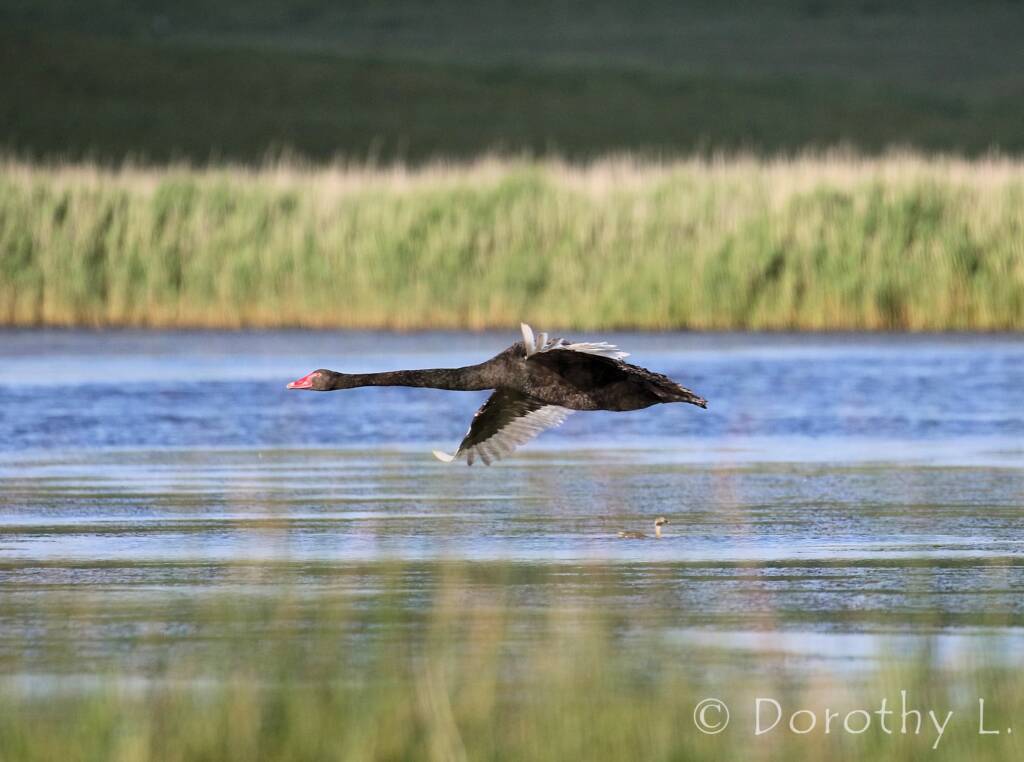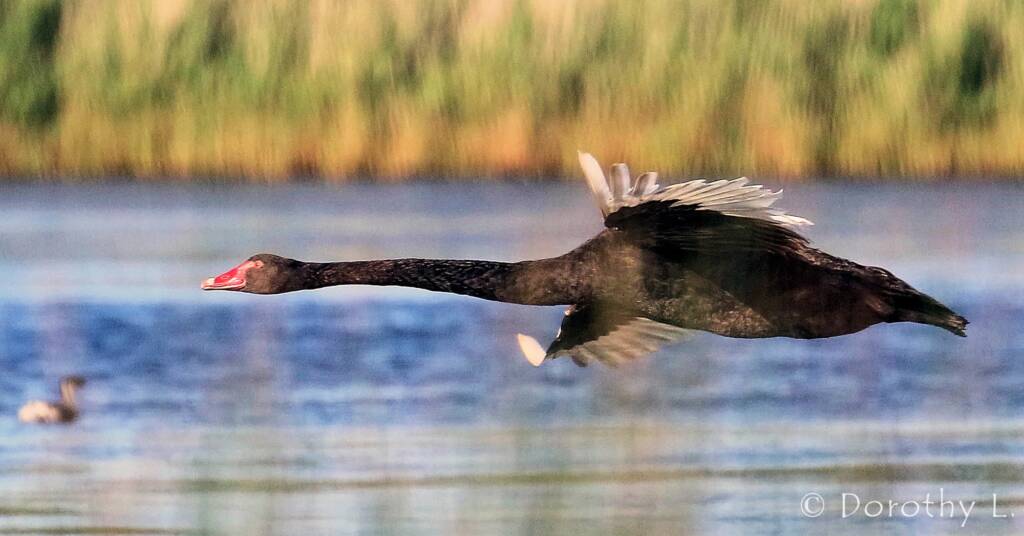Black SwanBlack Swan – nesting & sexuality Black Swans at the Sewage Ponds Black Swan – water & reflections
The Black Swan (Cygnus atratus) are a large waterbird native to Australia. They are widespread throughout Australia, from the east to west coast, although they are more common in southern Australia and Tasmania.


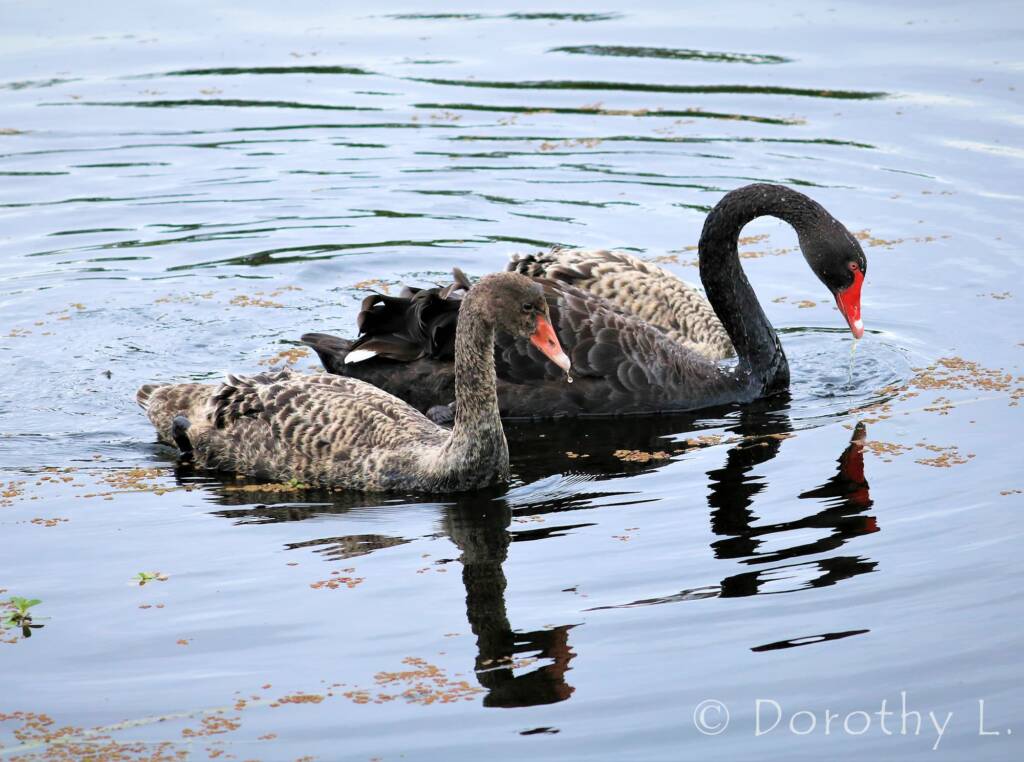
They occur in wetlands, river estuaries, bays and great lakes. Where wetlands areas are permanent, the Black Swans are thought to be sedentary (inhabiting the same locality throughout their life), however if the wetlands dry out, they migrate. New research have revealed that they may be more nomadic then first thought, being opportunistic in their response to rainfall and drought. They have been sighted in semi-arid region including Central Australia, where there are semi-permanent and permanent waterholes. Black Swans have been sighted at 2 Mile in the West MacDonnell Ranges and Alice Springs Sewage Ponds (see our image of a Black Swan and flock of Australian Pelicans).

The Black Swan is herbivorous, with their diet consisting of wetland/marshland plants and aquatic plants such as algae and weeds. They can often be seen dipping their head and neck under the water and in deeper water up-ending their body to reach the bottom. They are also known to feed on pasture plants near the shoreline.
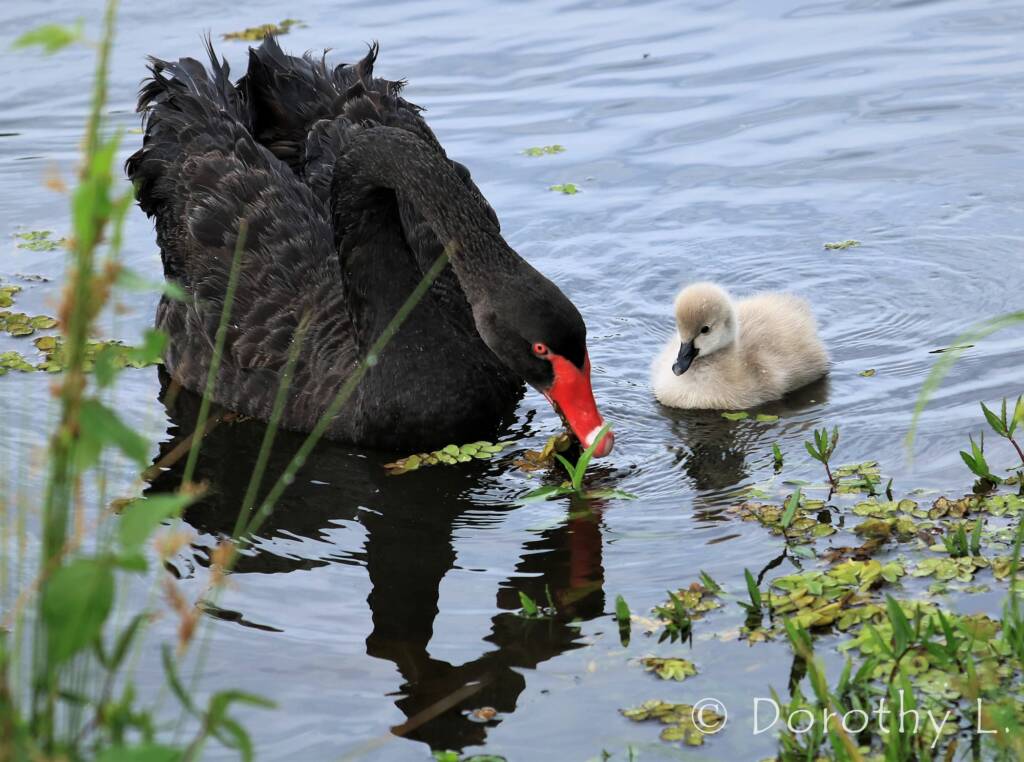
Black swans have been introduced in a number of other countries including New Zealand and the United Kingdom.
The swans appear to be jet black, but their plumage can have grey hues and browns under certain lighting condition. They have white primary wing feathers that are visible when the birds are in flight. Their bill is red with a pale bar and tip, with legs and feet being a greyish-black in colour. The adult male and female are similar in colour with the adult male being larger then the female.
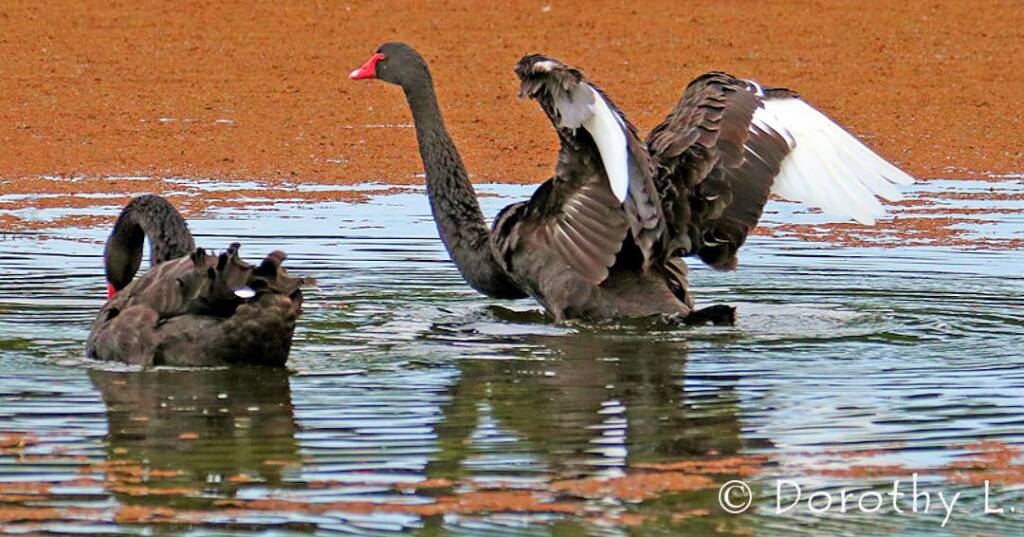
The male swan is called a “cob” and the female is called a “pen”. The term “cob” comes from the old German term Knopf meaning knob, relating to the knob on the top of the male beak (being more obvious in the white swans in the northern hemisphere. The term “pen” is because of the way the female holds her wings back in a penned manner from the English term Penne.

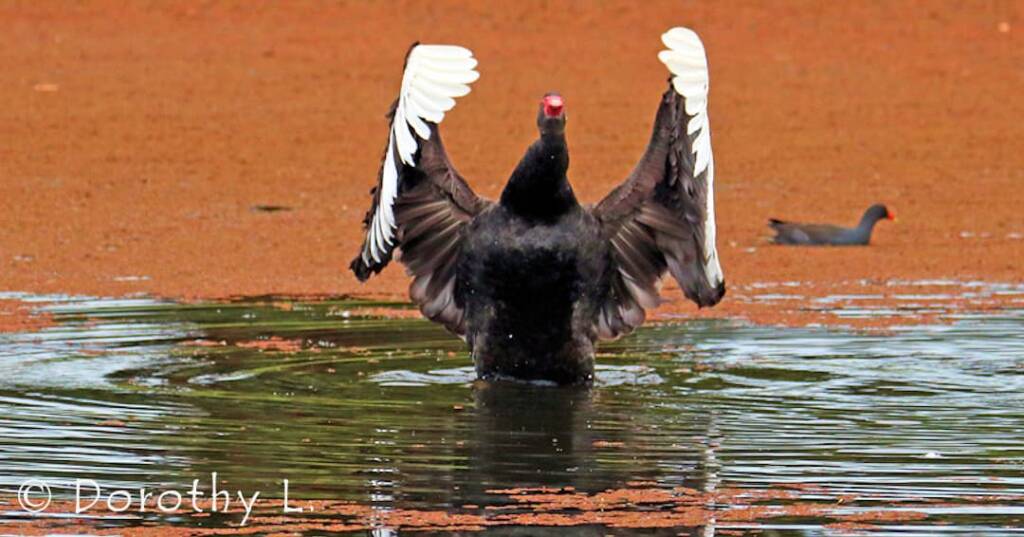
Gods and constellation
In Greek mythology, Cycnus or Cygnus, was the son of Apollo.
Cygnus is a northern constellation, one of the most recognizable constellations of the northern summer and autumn, and it features a prominent asterism (a known pattern or group of stars that can be seen in the night sky) known as the Northern Cross (being part of the constellation Cygnus the Swan.
Images © Dorothy L
Aboriginal Dreaming
There are a number of stories about the Black Swan including Wurrunna, as told to South Australian born writer Catherine Eliza Somerville Stow (1 May 1856 – 27 March 1940), who wrote as K. Langloh Parker.
The Dreamtime story of the black swans tells how two brothers were turned into white swans so they could help an attack party during a raid for weapons. It is said that Wurrunna used a large gubbera, or crystal stone to transform the men. After the raid, eaglehawks attacked the white swans and tore feathers from the birds. Crows who were enemies of the eaglehawks came to the aid of the brothers and gave the black swans their own black feathers. The black swan red beak is said to be the blood of the attacked brothers, which stayed there forever.
Australian Legendary Tales, by K Langloh Parker
Another tale, The Story of the Black Swan – Guunyu is told by the artist Cheryl Davison, which inspired her to create her design for the 2018 Sydney Swans Indigenous Guernsey.
In the dreamtime lived a beautiful white swan. It was graceful and elegant and had beautiful white feathers, amongst all the birds the swan was the most beautiful. We call him Guunyu. He lived in the waterways of lakes and billabongs…
Home of the Sydney Swans, see footnote link to read The Story of the Black Swan – Guunyu
Popular Culture
As well as the spiritual significance in Aboriginal culture, the black swan has a presence in the white Australian culture. It is the official state emblem of Western Australia, is depicted on the flag of Western Australia and on the Western Australian coat-of-arms. It has been used as an emblem on coins, logos, mascots, as well as commercial branding on products and services.

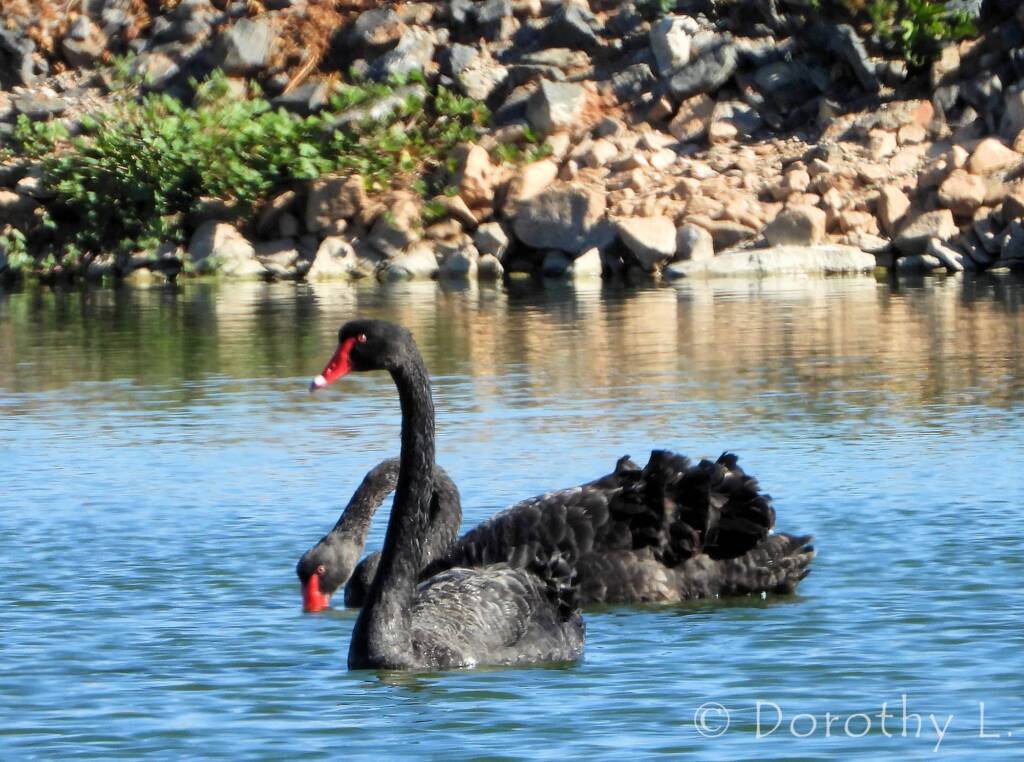

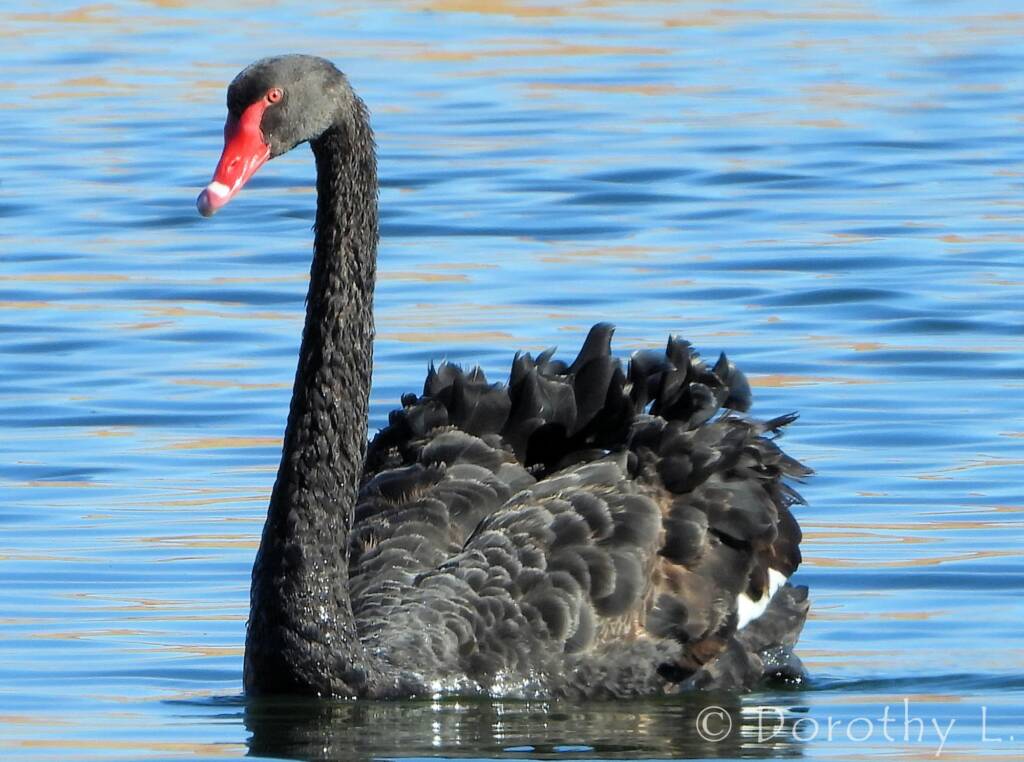
- Scientific classification
- Kingdom: Animalia
- Phylum: Chordata
- Class: Aves
- Order: Anseriformes
- Family: Anatidae
- Genus: Cygnus
- Species: C. atratus
- Binomial name: Cygnus atratus
- Synonyms:
- Anas atrata
- Chenopis atratus

West MacDonnell Ranges
Footnote & References
- Black swan, https://en.wikipedia.org/wiki/Black_swan (last visited June 20, 2021).
- Black Swan, BirdLife Australia, https://www.birdlife.org.au/bird-profile/black-swan
- The Australian Black Swans, Swan Lovers, https://swanlovers.net/category/black-australian-swans/
- K. Langloh Parker, https://en.wikipedia.org/wiki/K._Langloh_Parker (last visited June 20, 2021).
- The Story of the Black Swan – Guunyu, by artist Cheryl Davison, Sydney Swans, https://www.sydneyswans.com.au/news/127929/the-story-of-the-black-swan-guunyu
Black SwanBlack Swan – nesting & sexuality Black Swans at the Sewage Ponds Black Swan – water & reflections
BirdsApostlebird Australasian Darter Australasian Figbird Australasian Gannet Australasian Grebe Australasian Pipit Australasian Robins Australasian Shoveler (Spatula rhynchotis) Australasian Wrens Australian Babblers Australian Bustard Australian Chats Australian Magpie Australian Pelican Australian Pratincole (Stiltia isabella) Australian White Ibis Bassian Thrush Black-faced Cormorant Black-faced Woodswallow Black Swan Bowerbirds Brolga Brown Songlark Channel-billed Cuckoo Cinnamon Quail-thrush Cormorants Cuckooshrikes and Allies Dotterels Lapwings Plovers Doves & Pigeons Emu Fairy Martin Finches Grey Fantail Grey Teal Honeyeaters Kingfishers Little Friarbird Little Grassbird Magpie-lark Masked Woodswallow Noisy Pitta Olive Whistler Paradise Riflebird Pardalotes Parrots Pheasant Coucal Pied Butcherbird Rainbow Bee-eater Raptors Rufous Fantail Redthroat Rufous Bristlebird Silver-crowned Friarbird Torresian Crow Waders Welcome Swallow (Hirundo neoxena) Whiskered Tern (Chlidonias hybrida) White-browed Woodswallow White Capped Noddy White-faced Heron White-necked Heron Willie Wagtail Yellow-throated Scrubwren

